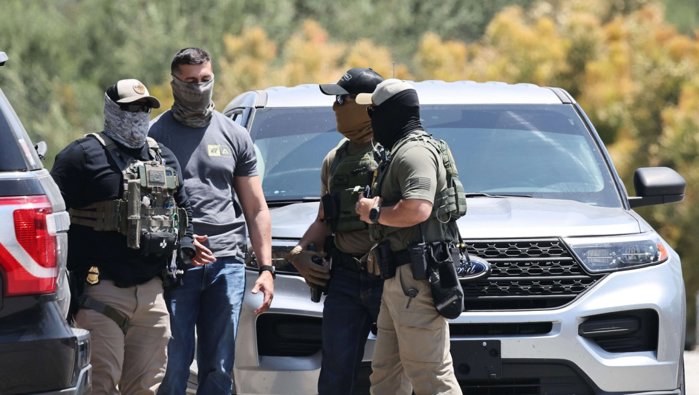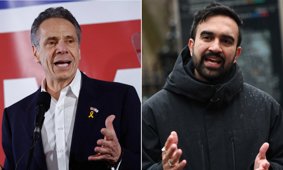
California Bans Masks for ICE, Sets ID Rules for Raids
California’s new law requires on-duty officers to be identifiable and curbs immigration raids in schools and hospitals after masked ICE operations sparked outrage.
California Governor Gavin Newsom has signed a first-in-the-nation law barring federal agents—most notably U.S. Immigration and Customs Enforcement (ICE) officers—from wearing face-concealing masks during official operations in the state, a practice he said fuels intimidation and erodes public trust. The law follows weeks of contentious immigration raids around Los Angeles and takes effect January 1, 2026 The Washington Post.
What the law does—and doesn’t do
The statute prohibits balaclavas, ski masks, gaiters and similar coverings that obscure an officer’s identity during enforcement actions. Exceptions include undercover work, certain tactical deployments (e.g., SWAT), and medical masking. Separately, the package Newsom signed requires officers to be identifiable by name or badge number.
California officials paired the mask restrictions with measures limiting immigration enforcement in schools and hospitals without a valid judicial warrant, and requiring schools to notify families when immigration agents are present on campus—reviving “safe space” expectations that advocates say were weakened in recent years.
Who is covered?
Coverage differs slightly across accounts, but the thrust is clear: the masking ban is aimed at federal immigration agents operating in California. Reporting notes that enforcement for state police may be treated differently, while the bill package overall requires law enforcement to display identification. In any case, the most consequential effect is on federal immigration operations in neighborhoods, workplaces, and near public facilities ABC News.
Why now? A string of masked raids and public backlash
The legislation follows viral footage and protests over masked officers conducting arrests in unmarked vehicles during recent ICE operations across the Los Angeles area. The raids prompted days of demonstrations and a highly unusual federal deployment of troops to Southern California earlier this summer—moves that escalated tensions between Washington and Sacramento and triggered legal scrutiny ABC News.
The legal and political fault lines
Whether California can regulate the attire of federal agents is poised to become a constitutional test. The state argues that general, neutral rules promoting identification and public safety can apply to federal personnel so long as they do not substantially interfere with federal duties. Critics counter that any constraint on federal enforcement is preempted by the Supremacy Clause and creates safety risks for agents who face doxing or harassment. Expect swift litigation.
Newsom’s message—and the pushback
At his Los Angeles signing event, Newsom likened masked, unidentified arrests in unmarked vehicles to a “dystopian sci-fi movie,” arguing that transparency is essential to public safety and civil rights. Federal officials blasted the law as “despicable,” saying it endangers officers amid rising threats and assaults. The California State Sheriffs’ Association also questioned the law’s narrow exceptions and predicted court challenges The Washington Post
Schools and hospitals become “protected spaces” again
One pillar of the package reestablishes limits on immigration enforcement in educational and health settings, where the state says fear has disrupted learning and care. Under the new rules, nonpublic areas of hospitals are off-limits absent a warrant, and student information and classrooms gain added protection; schools must notify families if immigration agents appear on campus Governor of California
What changes on January 1, 2026
Beginning next year, California expects officers on duty to be visibly identifiable and generally unmasked during operations, except in codified circumstances. For immigration enforcement, the state’s position is that communities should be able to verify an officer’s agency and credentials—reducing the risk of impersonation and improving accountability. How, and to what extent, those rules bind federal agents will be sorted out in court The Washington Post.
National Guard deployment and the broader context
California’s confrontation with Washington intensified after the White House sent National Guard troops—and, for a period, Marines—to the Los Angeles region around large immigration sweeps, drawing lawsuits and rebukes from state leaders. A recent ruling faulted aspects of that deployment under the Posse Comitatus Act, underscoring how immigration enforcement has become entangled with broader civil-military and federalism questions.
What advocates and critics say
Civil-rights groups argue that visible identification is a basic safeguard against abuse and mistaken arrests, particularly in communities with mixed-status families. They add that masking fuels fear and chills cooperation with police. Federal officials insist anonymity can be essential to protect agents and their families from threats. Local law-enforcement associations warn that blanket restrictions could complicate joint operations or expose personnel to retaliation ABC News
Does California’s ban apply to every officer?
No. The measure targets face-concealing masks during official duties and carves out exceptions for undercover work, tactical deployments, and medical use. Questions remain about scope and enforceability for federal agents; litigation is likely The Washington Post.
Will ICE comply?
DHS has condemned the law and has not committed to compliance; federal officials argue the state lacks jurisdiction. California counters that neutral public-safety rules can apply on state soil. Expect court tests before the law’s January 2026 start date.
What about “sensitive locations” like schools and hospitals?
The companion bills restrict immigration enforcement in schools and health facilities without a judicial warrant and require schools to notify families if agents are on campus Governor of California.
How did we get here?
Masked-agent raids in greater Los Angeles, captured in social media videos and followed by mass protests, set the stage for Sacramento’s action; emergency troop deployments further inflamed debate ABC News.
Courts Will Define the Scope of California’s ICE Mask Ban
California’s rules are designed to make immigration enforcement visible and accountable, but their impact hinges on a federal-state showdown over jurisdiction and officer safety. With lawsuits all but certain and a 2026 effective date, the next months will determine whether the state’s experiment becomes a national model—or a flashpoint that courts curtail.
Source: ABC NewsThe Washington Post Governor of California






